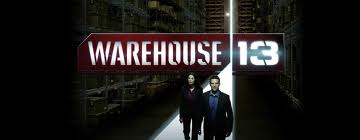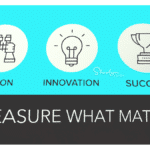Mr. Bartender and I enjoy the Syfy show “Warehouse 13”. If you’ve never seen the show, it’s about two U.S. Secret Service agents who have been assigned to a warehouse containing supernatural artifacts. The “artifacts” are connected to some sort of historical or mythological figure or event. For example, Lewis Carroll’s looking glass or Edgar Allan Poe’s pen. The artifacts can make people do weird and sometimes deadly stuff…so the agents are in charge of collecting the artifacts and keeping them safe in the warehouse.
Over the years of watching the show for purely entertainment purposes, I’ve realized there are a few leadership lessons you can also take away.
- Leaders need to provide their team with a core mission. High performing teams need a BHAG (big hairy audacious goal). On “Warehouse 13”, they have a singular mission to “snag, bag, and tag artifacts”. It keeps them focused and, therefore, successful.
- Leaders should be approachable. The agent in charge of the warehouse, Artie, has a bit of a curmudgeon personality. He’s there but not always in the moment with the other agents. As such, it gets him and other team members in trouble because he hears about issues after they’ve escalated to problems. Versus hearing about a potential problem and dealing with it proactively.
- Sometimes leaders need to trust their instinct. I’m not saying throw data out the window. But like Agent Pete’s “vibes” or Agent Steve’s ability to know if people are lying, sometimes we have to listen to our gut. In those moments, we might allow our gut to tell us to do more research in order to feel comfortable with a decision or situation.
- Leaders don’t always have to be early adopters. The key is to be effective. On the show, the agents communicate with a decades-old piece of equipment called a “Farnsworth” device. It’s sort of a steampunk videophone. It works for them. On the other hand, they have very advanced computer equipment. It’s all about using the right tools for the right job.
- Leaders are always grooming their replacement. This latest season brought a new dynamic. Mrs. Frederic, the older wise director of the warehouse program, is beginning to teach Agent Claudia, the young techno-wiz of the warehouse, about her role and how artifacts are made.
Leadership exists everywhere. Even in our favorite television programs.
Anyone else out there watch Warehouse 13? It’s a fun, quirky show. I like the blend of history with science fiction.
Image courtesy of Syfy








Stephen Booth says
#2 is why most managers will never be leaders. “Don’t bring me problems, bring me solutiions!” they cry. Which is why often the first thing they hear about something is when it had become a big problem becaseu when it was a little issue their directs couldn’t bring it to them and were forced to either try to contain it (and fail) or apply what appeared to be a solution based on their imperfect knowledge and restricted view whereas the manager (with a wider view and, therefore, less imperfect knowledge) could have seen an actual solution.
Grace says
Sometimes it’s a process that leadership occurs within an individual, rather than an external act. It’s an expression of who the agents are as people.
I love the tv show.
Recommand.
K says
Also love Warehouse 13.
What a great way to incorporate something that we like and enjoy into leadership lessons. 🙂
Sharlyn Lauby says
Thanks for the comments. To Stephen’s point, I’m seeing a lot of interest these days in problem – solving training. Companies looking to give their employees the tools to figure problems out on their own.
Kaushik Ghosh says
Leadership exists everywhere reminded me of another concept: One can learn from everything and everyone. Also reminds one of the importance of 360 degree feedback which allows you to gain multiple perspectives and not just getting one view from your ‘manager’. Some organizations still tend to keep 360 degree feedback only for leadership development – might as well get their leaders to watch the TV programs instead and let everyone else also have the benefit of learning from each other 🙂
Sharlyn Lauby says
Thanks for the comment Kaushik. I agree that there are leadership lessons everywhere. If we just look for them…
Stephen Booth says
Sharlyn, in my experience it’s usually not ability to problem solve that is the problem (but then I mostly work with people who have to problem solve as a key part of their job). Frequently the person who can see the problem doesn’t have the wider context view to see the solution or even that it’s not a problem at all. There’s an excellent example of this latter point in the book “The Goal” by Eliyahu Goldratt, by trying to optimise their section of a production line local managers cause a build up of inventory of part complete and completed goods which cannot be sold so tying up money (purchased raw materials, energy used, storgage space &c) that cannot then be spent elsewhere. Another example is the race ot the bottom that goes on as soon as work load drops off where managers try to get rid of as many walking cost reduction targets…I mean employees… as possible as quickly as possible. When things pick up they find that they don’t have the capacity to meet demand so customers go elsewhere. Usually the best solution is for someone who can step back and look at the whole piece to work on the solution.
Sometimes the person who can see the problem can also see the wider context but they don’t have the authority of relationships to make a solution work. Being further up the tree their boss may do.